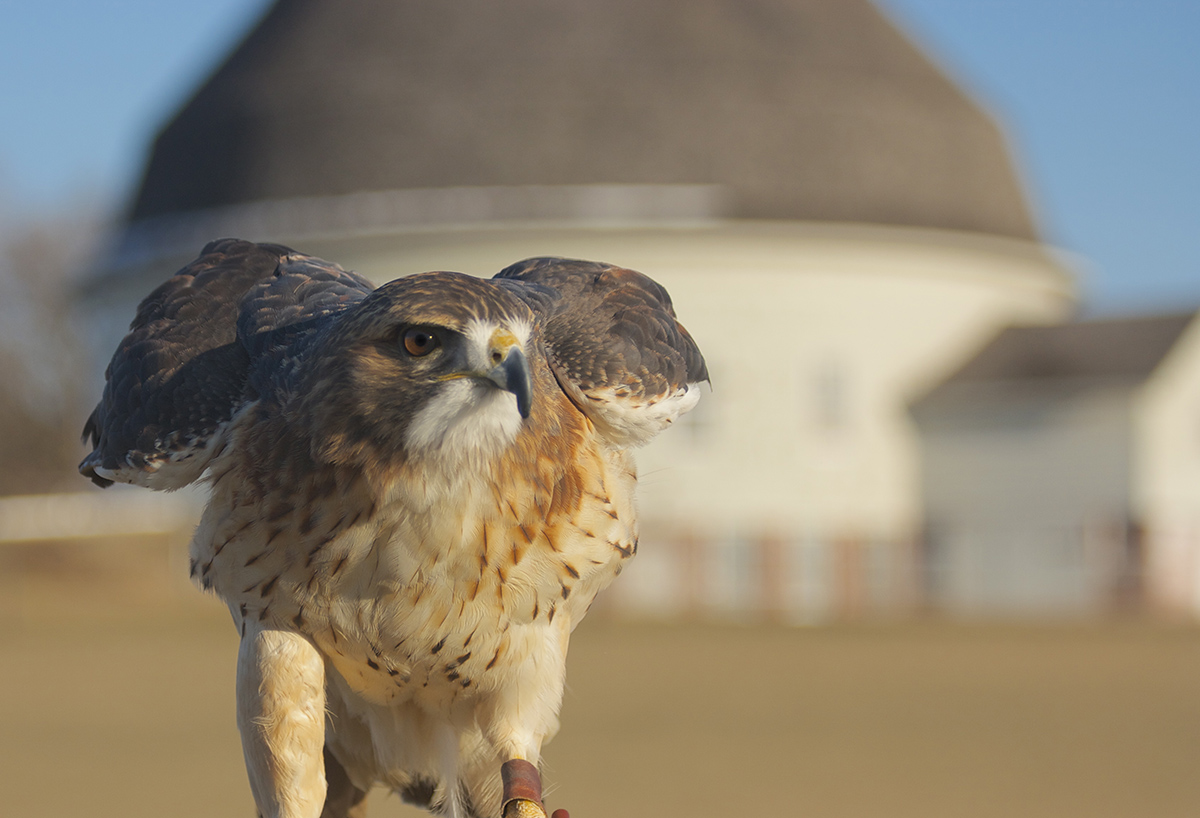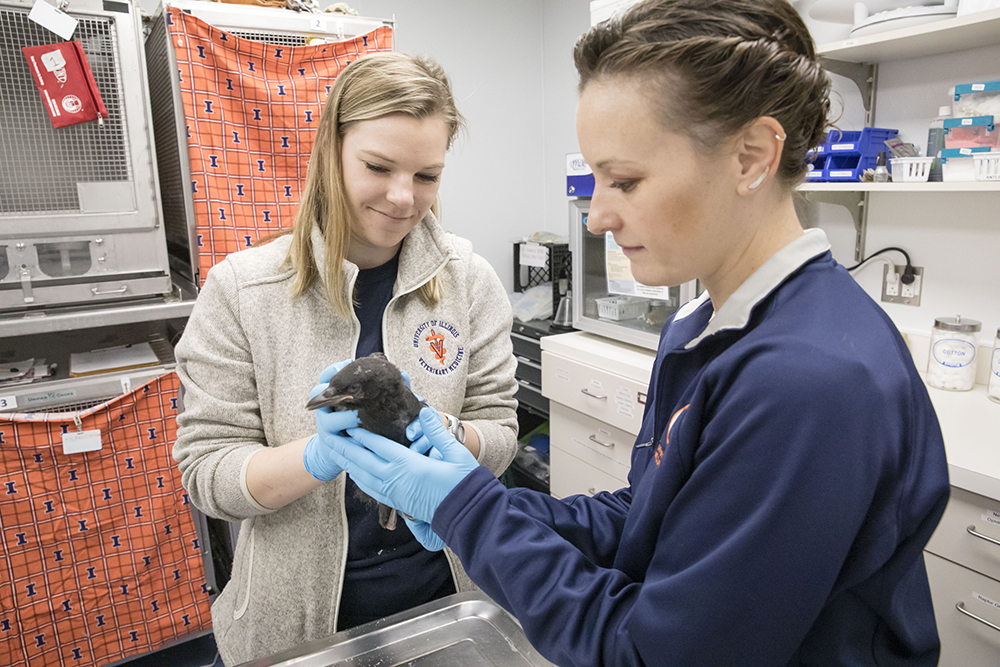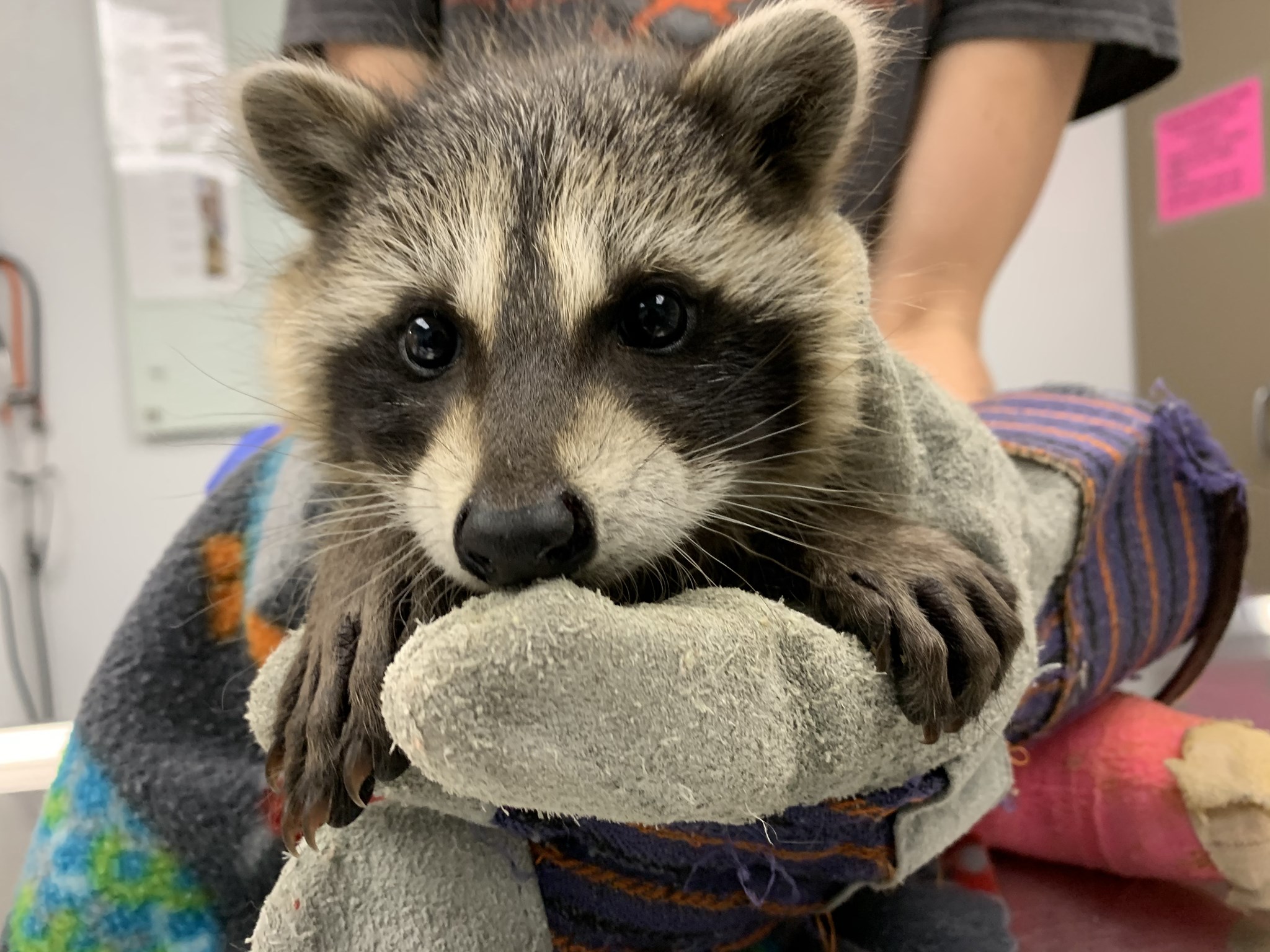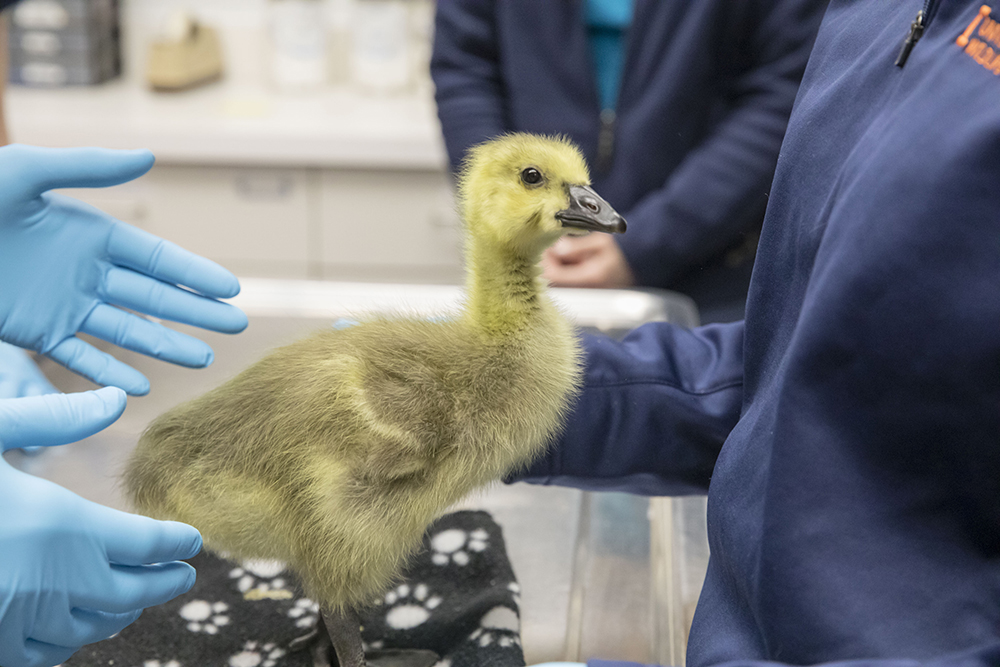Wildlife Resources
Our Mission
Provide care and treatment to sick, injured and orphaned wild animals, offer hands-on training to veterinary students, and educate members of our community about coexisting with native Illinois wildlife.
What We Do
The Wildlife Medical Clinic (WMC) is a student volunteer run clinic which accepts ill, injured, or orphaned native wild animals, with the exception of skunks and bats. For further information on the species we can accept, when to bring an animal into the clinic, or how to safely handle an injured animal until it can be brought to the clinic, see our Resources page.
The primary goal in the treatment of these patients is to release them back into the wild after they have fully recovered.
In special circumstances, the WMC will place permanently debilitated patients in collections at zoos, nature centers, or wildlife facilities where they will be used as ambassadors for their species in education campaigns.
If you are bringing a raccoon, coyote, or bobcat to the Wildlife Medical Clinic, we ask that you please leave the animal in your vehicle until you have spoken to a staff member so our team can transport the animal safely to the clinic.

These animals serve in our public relations program for community outreach.
Hours Receiving
Do not bring wildlife to the Veterinary Teaching Hospital.
Ill or injured free-ranging wildlife intended for our Wildlife Medical Clinic may no longer be brought to the Veterinary Teaching Hospital after hours (8 p.m. to 8 a.m.) due to increased concern about hospital staff and students’ exposure to Highly Pathogenic Avian Influenza (HPAI).
Animals may be brought to the Wildlife Medical Clinic only between 8 a.m. and 8 p.m. Outside that time, please keep the animal in a secure box or pet carrier, away from humans and pets, and do NOT offer it food or water.
As of February 18, 2025
From 8:00 a.m. to 6:00 p.m. Monday through Friday, animals may be brought directly to the Veterinary Medicine South Clinic to be transferred to the Wildlife Clinic. Between the hours of 8:00 a.m. and 8 p.m. on weekends, animals may be brought to the U. of I. Small Animal Clinic Emergency service where they will be monitored until a clinic member is available to transfer them. * See notice above for after hours receiving.
Whenever possible, please call ahead so the clinic can provide advice and is prepared for your arrival.
Have a question for us?
We can be reached by phone at 217-244-1195 from 7:30AM to 6PM. During the summer, students and staff are in the clinic throughout the day. When classes begin in August, if we miss your call our student executive board members monitor voicemails to return any left messages.
Urgent calls between the hours of 6PM and 7:30AM may be directed to the Small Animal Emergency clinic at 217-333-5300.
Funding
The WMC is a non-profit organization that depends solely on fund-raising, donations, and grants for its operating budget. The College of Veterinary Medicine donates the clinic space and utilities, but all other costs are the responsibility of the WMC. Donations cover the cost of food, diagnostic tests, equipment, medications, consultations, and surgeries for our patients. Volunteers provide the majority of animal care, and veterinary students do most of the care in their first three years of the curriculum. The WMC has approximately ninety volunteers responsible for receiving and examining patients and providing daily care to current ones.
If you would like to support the WMC’s mission of conservation, public education, and veterinary teaching, please donate to the WMC!



